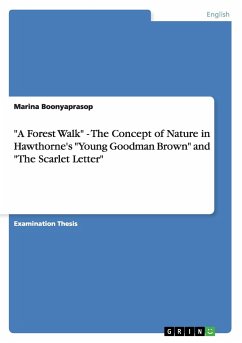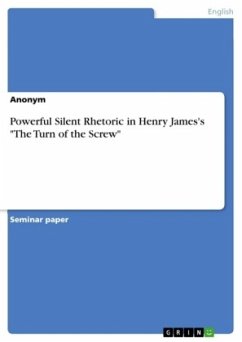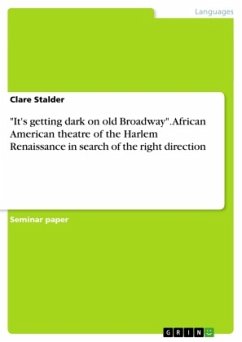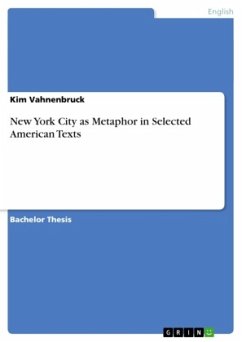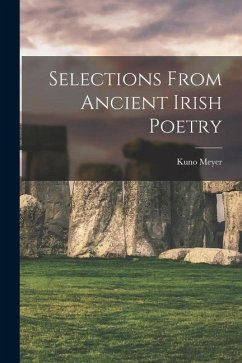
Seducing Transcendental Narrative Perspectives in Nathaniel Hawthorne's "Rappaccini's Daughter"
"The Proper Point of View"
Versandkostenfrei!
Versandfertig in 1-2 Wochen
8,99 €
inkl. MwSt.

PAYBACK Punkte
0 °P sammeln!
Seminar paper from the year 2005 in the subject English Language and Literature Studies - Literature, grade: 1,0, Johannes Gutenberg University Mainz, language: English, abstract: 1. IntroductionAs with every text in literature, a single consistent reading is never possible. However, Nathaniel Hawthorne's 1844 story "Rappaccini's Daughter" has caused quite a sensation about its topicality, and many attempts to reconcile different critical approaches have been thwarted. Whereas, still today, some critics see religion, in particular the Fall of Man, as the story's major issue, others oppose with...
Seminar paper from the year 2005 in the subject English Language and Literature Studies - Literature, grade: 1,0, Johannes Gutenberg University Mainz, language: English, abstract: 1. IntroductionAs with every text in literature, a single consistent reading is never possible. However, Nathaniel Hawthorne's 1844 story "Rappaccini's Daughter" has caused quite a sensation about its topicality, and many attempts to reconcile different critical approaches have been thwarted. Whereas, still today, some critics see religion, in particular the Fall of Man, as the story's major issue, others oppose with their ideas about stereotypical womanhood or Hawthorne's supposedly harsh criticism of science. Till the present day, as Fogle states, an "accurate definition of its elements is next to impossible" (92).The question of whether these so radically contradicting analyses of the story root in Hawthorne's use of allegory is justified. As with every allegory, it needs a deeper examination to encode the story's secondary meaning in order to understand the different layers of the text. With this, it seems quite obvious that contradicting readings arise. I argue though that it is not predominantly Hawthorne's use of allegory which causes such an amount of different viewpoints; instead, these differences mainly root in the skilful use of deviating narrative perspectives which lead the reader to confusion about the meaning of "Rappaccini's Daughter".By taking into account the interaction between the author, the narrator, Giovanni, and the reader, I furthermore argue that Hawthorne entraps the latter to make the same errors as Giovanni and the narrator make within the story: Reading nature symbolically and committing the "sin of synecdoche" by substituting, "in moral and rhetorical terms," the part as a symbol of the whole (Haviland 280). Doing this, then, "steal[s] away the human warmth" and denies access to "the proper point of view" (Hawthorne 1313). The analysis of the different narrative perspectives is crucial as it demonstrates how "Rappaccini's Daughter" calls into question the ideas of the Transcendentalists, in particular of Emerson, who presented a philosophical concept to his contemporary reader which claimed to allow a total perspective on the world. This reader-oriented approach proves how the narrative structure of the text works to ironically deconstruct Emerson's doctrine by pointing out that spirit and nature have nothing to do with one another; instead, reading nature...



